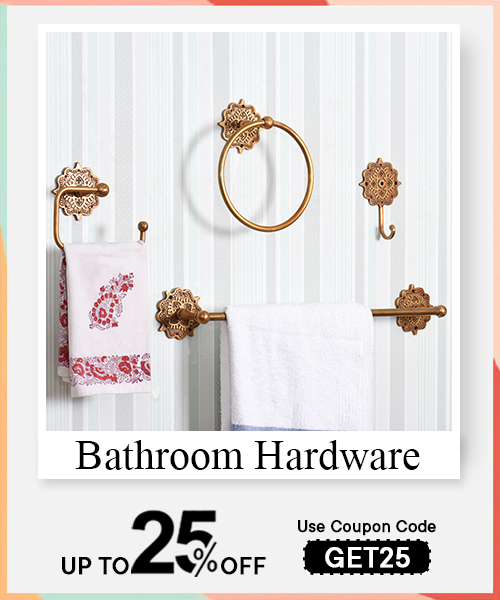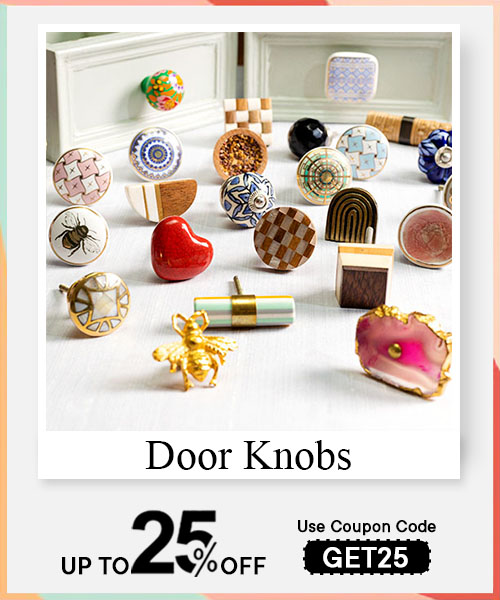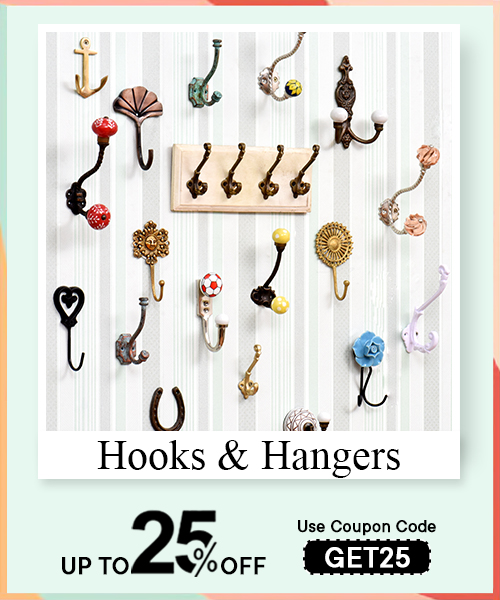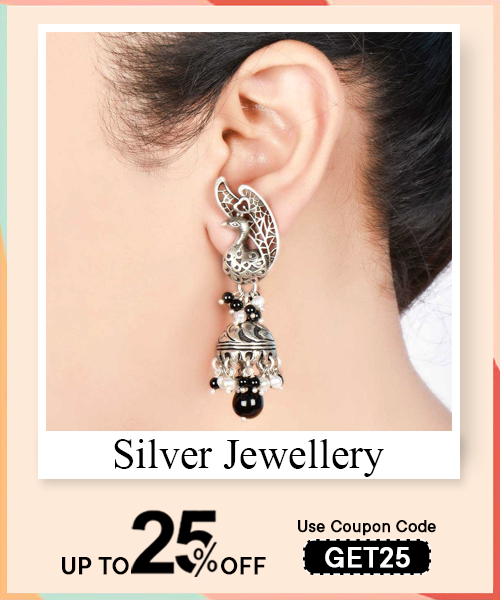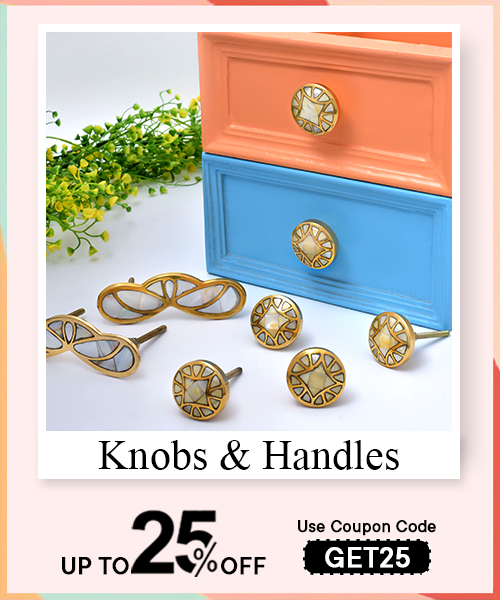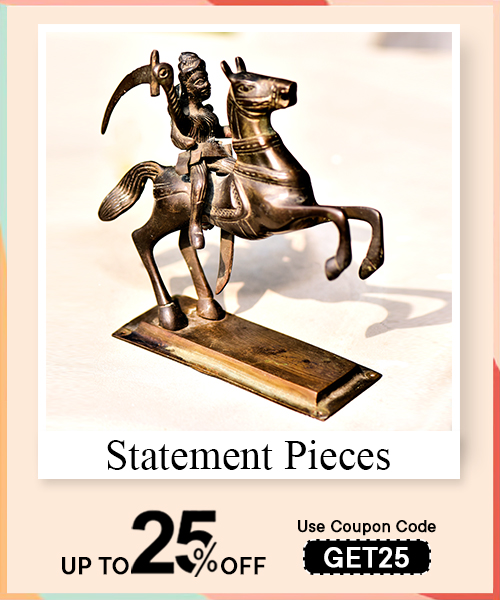A few interior design elements survive the test of time, providing a touch of class and refinement to our living spaces in an ever-changing world. Traditional door knobs are one such timeless element that serves both a functional and decorative role in your house. We dig into the subtleties of five unique classic door knob types in this extensive product description: Colonial, Modern, Tudor, Art Deco, and Mid-Century.
Colonial door knobs, a design influenced by the 18th-century American aesthetic, are generally crafted with meticulous attention to detail. Brass, bronze, and Vintage finishes are typical materials for Colonial door knobs, conveying a feeling of historical authenticity.
Contemporary door knobs add a modern touch to any environment with their sleek lines, geometric forms, and minimalist designs. Stainless steel, chromium, and nickel are common materials, reflecting modern design's clean and uncomplicated aesthetics. These door knobs seamlessly complement modern environments, combining design and utility.
Tudor door knobs are frequently ornamental, with detailed designs and a feeling of grandeur. Wrought iron and aged brass typically provide a vintage look embodying the Tudor design's essence. These door knobs bring a touch of royal majesty to your entryways.
Art Deco door knobs are a tribute to the golden period of design, with robust geometric designs, abundant materials, and detailed craftsmanship. Materials like brass, chrome, and glass are popular, and the knobs frequently include stepped or geometric designs that evoke the renowned Art Deco style.
Mid-Century door knobs are distinguished by their clean lines, organic shapes, and a combination of usefulness and beauty. Wood, brass, and plastic are typically utilized to make these door knobs, which provide a warm and inviting atmosphere. They are ideal for houses with a mid-century modern or retro design motif since they offer a nostalgic touch to your doors.
Overall, Conventional door knobs are available in a range of styles, each with distinct qualities that appeal to diverse design tastes.

The choice of door knob material when selecting the finishing touches for constructing a new residence or commercial space or renovating an existing one is essential. The following is a list of some of the many door knob materials utilized in today's world.
Stainless steel comprises iron, carbon, and various elements known for durability and robustness, making them an excellent choice for door knobs. Stainless steel provides resistance to breakage, contributing to heightened security. Stainless steel's affordability is noteworthy, given the widespread availability of steel door knobs.
- Pros:
- Stainless steel door knobs showcase longevity.
- They have a well-established reputation for durability.
- Stainless steel door knobs are cost-effective.
Wooden Door Knobs
Solid wood has been the most common building material used as a door knobs. Wood is also great for constructing a design with a neutral theme. Many coat finishes can be applied to make it stronger and more seamless.
Wood, on the other hand, is a fantastic material for building bespoke doors since it can be carved into any shape or size and painted in any color.
- Pros:
- The natural hue of wood can complement the home's look.
- Wooden knobs are simple to clean.
- Wood is a long-lasting and sturdy material.
- Cons:
- Wood is not recommended for usage in moist or humid environments.
Aluminium has a silvery-white shine that makes it an excellent material for knob design. Unlike specific steel handles, all aluminum knobs do not rust, making them suited for outdoor usage due to their resistance to weather changes.
- Pros:
- Aluminum is minimalist and easy to maintain.
- Aluminum is rust-resistant and long-lasting.
- Cons:
- The sole downside of aluminum is that it can be expensive.
When we glance at the glass knobs, we are impressed by its elegance, and it is the material of choice for many designers' door knobs since it provides an attractive and elegant ambiance in your space.
- Pros:
- Glass door knobs have an exceptional and modern appearance.
- Glass door knobs add a sophisticated touch.
- Cons:
- Glass door knobs can be incredibly brittle.
Brass Door Knobs
Brass knobs for doors are inexpensive and fire-resistant, which means they are secure and may protect the door or anything behind it from fire damage. Brass is frequently combined with other metals for specialized applications. These door knobs offer a charming, one-of-a-kind appearance.
- Pros:
- Brass door knobs are both attractive and elegant.
- They are sturdy and long-lasting.
- Cons:
- Brass door knobs are easily scratched or damaged.
- They can corrode in extreme weather conditions.
- The color of brass may fade with time.
Zinc alloy knobs, also known as zinc alloy pulls, have lately gained popularity. Zinc alloy knobs are available in a variety of shapes and finishes to match any door, kitchen, or piece of furniture. Furniture handle suppliers will assist you in selecting the best one for your requirements. Many other finishes are available, including chrome, sandblasting, nickel, matte, oxidized black, pewter, old-fashioned copper, brass, and many more.
- Pros:
- Zinc door knobs are long-lasting.
- They are cost-effective.
- Zinc door knobs are resistant to rust and corrosion.
In today's world, black door knobs are the latest and most distinctive fashion trend. Because they dramatically modify your interior design, these door knobs have been put in all new enterprises. The addition of black door knobs to your property will offer beauty and sophistication.
- Pros:
- Black door knobs are stylish, sophisticated, and appealing.
- They are adaptable and go with any material.
- Cons:
- Because black is a striking color, dust is apparent on the handles.
- Black door knobs may sustain damage during installation.
MDF is a more practical alternative to plywood that is gaining favor due to its durability and inexpensive cost. For its production, sand dust is compressed and formed into a board, which is then fortified using a variety of processes. The notched MDF allows it to work as a doorknob.
- Pros:
- MDF door knobs are inexpensive.
- It has a consistent style.
- The surface of these door knobs is smooth.
- Cons:
- It is not suitable in damp or rainy conditions.
Read More:MAINTENANCE AND CARE TIPS FOR ANTIQUE BRASS CABINET KNOBS
Selecting the appropriate finish is crucial when replacing the hardware on your doors. Nevertheless, examining a variety of market-available styles and popular finishes may assist you in making a choice.
The most well-liked ones follow current trends in interior design, such as oil-rubbed bronze, chrome, brass, and matte black.
Chrome and matte black are incredibly adaptable finishes with any property type. On the other hand, finishes like oil-rubbed bronze and antique brass are timeless and well-liked for historic homes. Mattified finishes, such as matt black, give a room a modern appearance and unify disparate design components. Even though matt black is frequently used on modern hardware, it is also frequently used on vintage-style hardware seen in old buildings. Consider rustic lever handles, hinges, and locks. Matt black, therefore, works well in any type of house. High-gloss finishes, such as chrome or polished brass, have grown in popularity along with the opulent, retro-inspired interior design trend. While most people cannot afford real gold or silver handles, investing in brilliant finishes like these can capture the exquisite look without going over budget.
Every finish has a distinct aesthetic that looks amazing in any house. To help you finalize the interior decor of your home and discover other finish possibilities for your new door hardware, keep exploring.
Matte black is sleek, fashionable, and surprisingly adaptable. Depending on the space, black hardware can provide an exquisite appearance. When remodeling doors, both homeowners and designers love it since it allows for an excellent background for different kinds of hardware. However, it may also provide a decidedly modern appearance for contemporary homes with monochromatic or minimalist décor. Matt black complements other metals like brass or nickel particularly well.
Chrome is a popular finish. This sleek and adaptable finish makes it seem well in any room—kitchens, living rooms, and bathrooms. Its neutral tone and silvery appearance make it go well with various home fixtures, fittings, and appliances, especially those with matching neutral finishes like stainless steel.
Brass hardware is an excellent option if you want a traditional design with a nod to the past. Brass is a golden metallic alloy made of copper and zinc that adds a touch of luxury that may be dressed up or down. This is a more conventional finish with amber and gold undertones that looks good in practically any setting.
Brass is a flexible finish that works well with many other home hardware items, fixtures, and accessories. It is ideal for both modern and traditional styles.
For those seeking a classy and refined aesthetic for their homes, nickel door knobs are the ideal option. They are available in various sizes and styles, including elegant polished nickel, delicate satin nickel, and modern black nickel. Every type of house design may be paired with one of these styles. Nickel hardware ensures that you never have to worry about it being soiled or broken.
We have only discussed a handful of well-liked hardware finishes. A wide range of designs, styles, and finishes are available.
The more well-liked hardware finishes are rose gold, copper, or dual-tone glass; brushed chrome; stainless steel; and Bronze. Whichever finish you choose for your doorknob or handle, you can be confident that these options are well-liked for a reason. Everyone has a distinct appearance and texture.

For years, door knobs have been essential to interiors, acting as both decorative and practical parts. There are many different types of traditional door knob forms, and each has its own unique qualities, charm, and valuable considerations. We examine the unique attributes of five common door knob forms in this study: round, oval, diamond, square, and hexagonal. We'll discuss each form's benefits and drawbacks and look at the design elements.
One of the most traditional and durable styles is the round door knob. They have an easy-to-grip, comfortable shape that makes them simple to spin. Their lack of sharp edges makes them less prone to being caught on clothes, which adds to their appeal. Round door knobs are adaptable and go well with both classic and modern architectural designs.
- Advantages:
- Door knobs with round knobs are a timeless style that complements many artistic tastes.
- They are user-friendly, being simple to hold and turn.
- These knobs are flexible and able to accommodate many door styles and kinds.
- Cons:
- Door knobs with round knobs might not have unique qualities and personalities of more intricate forms.
- These knobs require a larger surface space is needed for ornamental accents.
Oval door knobs differ from the traditional round style by having a longer shape. This design offers a comfortable grip as well. Oval door knobs are often used to provide a minimal ornamental touch to doors that are not excessively extravagant. They strike the perfect combination of simplicity and elegance.
- Pros:
- Oval door knobs look elegant and polished.
- The grip of oval door knobs is more compatible than that of spherical knobs.
- These knobs are suitable for adding a touch of elegance to various door types.
- Cons:
- The surface area of oval door knobs is limited for detailed elaboration.
Octagonal door knobs give regular patterns a geometric twist. They have an unusual and eye-catching look due to its eight sides.
- Pros:
- The octagonal door knob design is unique and distinct.
- In these knobs, there is plenty of surface area for ornamental elaboration.
- The geometric form of octagonal door knobs creates visual intrigue.
- Cons:
- When compared to round or oval knobs, edges may be less pleasant to hold.
- These door knobs may not be appropriate for doors with complex woodwork.
Diamond-shaped door knobs are an extravagant and unconventional choice for people looking to break away from more traditional designs.
- Pros:
- Diamond door knobs have a distinctive and unique design.
- Cons:
- Points of diamond door knobs may be more challenging to grasp.
Square door knobs provide a sleek and solid design that contrasts sharply with more rounder versions. Due to their clean lines and defined edges, they are a popular choice for modern interiors. Square knobs look nice on doors with angular or geometric details.
- Pros:
- The design of square door knobs is modern and structured.
- These door knobs are ideal for doors with angular or geometrical elements.
Finding the correct balance between form and function, as with any design choice, ensures that the chosen door knob not only enhances the aesthetics of a place but also functions properly.
Read More:UPCYCLING YOUR OLD FURNITURE WITH ANTIQUE BRASS CABINET KNOBS
Traditional door knob accessories include a wide range of ornamental and helpful pieces meant to improve the visual appeal and functionality of doors in a conventional or classic architectural setting.
Backplates, ornate plates that lie behind door knobs or levers, are at the basis of conventional door knob accessories. Backplates serve two functions: they protect the door's surface from wear and tear caused by regular usage while providing an extra layer of beauty to the door assembly.
Rosettes, which are similar to backplates, are circular ornamental plates that are fitted around door knobs or levers. These pieces serve as decorative features that match the knob's design, resulting in a more coherent and visually appealing look while also offering an extra degree of protection.
Keyhole Escutcheons are Simply designed plates that are around a lockset's keyhole. Beyond their ornamental function, these items promote a feeling of historical charm, with elaborate patterns that match classic design ideals.
Latch covers serve a dual duty by enclosing the latch mechanism on the door's edge. They protect the latch from harm while contributing to the overall visual concept by adding historical themes and decorations.
Strike plates mounted on the door frame are essential in fastening the door when closed. Traditional striking plates are more than just practical; they are handcrafted with beautiful embellishments that compliment the doorknob, offering a uniform visual experience throughout the home.
Traditional door knockers, while not directly related to door knobs, are iconic embellishments that provide character to entryways. These classic pieces frequently include elaborate motifs, such as animals or geometric forms, that provide a focal point that complements the traditional look.
Traditional door hinges, considered fundamental components, are available in various finishes and styles. When paired with the doorknob and other accessories, these hinges assist in smooth door operation and add to overall visual uniformity.
Traditional thumb turns function as mechanisms for locking and unlocking doors from the interior of doors fitted with privacy locks. These accessories frequently have elaborate motifs that mimic the doorknob, ensuring a consistent and themed look.
Whether wall-mounted or set on the floor, door stops keep doors from colliding with walls, reducing possible damage. Classic door stops blend into the overall appeal with various styles and materials that complement the classic style.
Traditional mail slots or letter plates on front doors perfectly merge usefulness and style. These features enable mail delivery while preserving the traditional ambiance, demonstrating a dedication to functionality and conventional design aspects.
Traditional door knob accessories are a blend of creativity and practicality, with each component contributing to a unified and timeless look.
Maintaining traditional door knobs not only adds to the lifetime of these timeless fixtures but also assures your home's safety and security. A well-kept door knob not only functions smoothly but also provides a sense of beauty to your living area.
Traditional door knobs must be cleaned regularly to preserve its visual appeal and functioning. First, use a soft cloth or sponge to remove any apparent dirt or grime. A moderate soap solution can be utilized to remove stubborn stains. Avoid using harsh cleaners, which might harm the finish. Pay close attention to little features and cracks. To avoid rust, make sure the knob is dried adequately after cleaning. Cleaning your door knobs regularly not only keeps them looking good but also adds to a healthier living environment.
Due to regular use, door knobs might become loose over time. Check for any wobbling or instability regularly. Locate the screws on the inside of the door and tighten them tightly using a screwdriver. This periodic inspection and screw tightening ensures that the door knob stays firmly in place, eliminating potential mishaps and preserving the fixture's overall stability.
Smooth operation is crucial for door knobs, and proper lubrication is critical to achieving this. Apply a small amount of silicone-based or graphite lubricant to the moving parts of the knob, including the latch and spindle. This minimizes friction and ensures the knob turns effortlessly. It's essential to avoid oil-based lubricants as they can attract dust and dirt. Regular lubrication enhances the lifespan of the doorknob, preventing wear and tear while maintaining its ease of use.
If cleaning, tightening, and lubrication are insufficient, it may be essential to replace the door knob. Replacement is a simple operation that usually involves the removal of screws and the detachment of the old knob before installing the new one. Upgrading to a more contemporary and secure door knob may improve both aesthetics and safety.
Traditional doorknobs serve as an essential part of home security. Choose a door knob with a solid and durable construction to provide maximum safety.
Read More:EVERYTHING YOU NEED TO KNOW ABOUT DOOR KNOBS: A COMPREHENSIVE GUIDE
Installing a classic door knob is a reasonably simple task that requires only a few essential tools and some time. Whether you're changing an old knob or installing a new one, these step-by-step instructions will walk you through the procedure.
- A set of traditional doorknobs
- Screwdrivers
- Measuring tape
- Pencil
- Hammer with a Chisel
- The strike plate
- Screws
Get started by measuring the present door knob's height or calculating the proper size for the new one. The standard height from the bottom of the door is 36 inches; however, you may want to change this based on personal choice or the design of the door.
Once you've decided on the height, use a pencil to mark the middle of the door where the knob will be attached. Remove the old knob and use the existing hole as a guide for replacing it.
You'll need to drill a hole for the latch if the door doesn't already have one. Align the latch template that came with the door knob set with the center mark on the door edge. Trace the outline of the latch with a pencil around the template.
To make the hole for the latch, carefully cut following the drawn lines using a chisel and hammer. Check the latch fit to ensure it is flush with the door edge.
Insert the latch into the newly formed hole. Make sure the latch's curved side faces the direction you want the door to close. Using the screws included with the door knob set, secure the latch in place.
A lot of conventional door knob sets are made up of two knobs joined by a spindle. Insert the spindle into the latch mechanism, making that the knobs are on the right side of the door. Using the screws provided, attach each knob to the spindle. To ensure the knobs are appropriately fastened, tighten the screws using a screwdriver.
Place the strike plate on the door frame, aligning it with the latch. With a pencil, trace the contour of the striking plate. Create a slight depression with a chisel for the striking plate to flush with the door frame.
Check to see that the latch connects smoothly with the strike plate.
Check the door knobs for smooth functioning before declaring the installation complete. When you spin the knobs, make sure the latch engages and releases appropriately. To ensure maximum efficiency, make any required modifications to the tightness of the screws or the location of the striking plate.
Choosing the proper door handle for your house can take time due to the range of types available. Whichever form of door handle is chosen, it should complement and improve your décor and overall design.
There are several factors to consider when selecting a door handle. The first consideration is functionality: what form of lock do you want or require? Is it a deadbolt, mortise lock, surface fabrication, or anything else you're searching for? Another key factor to consider is size; the handles should fit properly without any parts protruding too much.
Color affects the visibility and usefulness of the knob in ways other than aesthetics. Darker hues like bronze or black may improve longevity by masking wear and tear, but lighter finishes, such as polished chrome, can provide a sleek and modern look. Designers also examine the color of the door and the surrounding décor to ensure that the knob complements the overall visual harmony of the room.
Traditional door knob design requires detailed considerations, one of which is the direction of the knob itself. The orientation of a door knob is essential to its use, overall aesthetics, and adherence to historical design standards.
Brass, bronze, and high-quality hardwoods are frequently linked with traditional door knob designs. The cost of these materials, when combined with elaborate details and craftsmanship, can raise the entire price of the door knob. Handcrafted components or artisanal designs, popular in classic forms, may add to the cost.
Traditional door knob design costs maintain a balance between quality and affordability.
The design and style of the door knob is essential when considering its look and appeal. Traditional designs may include circular, oval, or geometric forms, reflecting artistic choices prevailing at the time. Furthermore, surface finishes such as antique patinas, polished textures, or textured treatments provide tactile and visual appeal to the entire look.
Another important consideration is size, which ensures that the door knob complements the proportions of the door and surrounding architectural components. Whether it's a Victorian-era doorknob with intricate detailing or a simpler Colonial design, traditional door knob aesthetic choices assist in creating a uniform and visually pleasant ambiance, linking the present to the rich fabric of design history.
Traditional door knob design focuses on security; a door knob is more than simply an attractive element—it's an essential component of a home's safety measures. A standard door knob's security is dependent on several design concerns.












